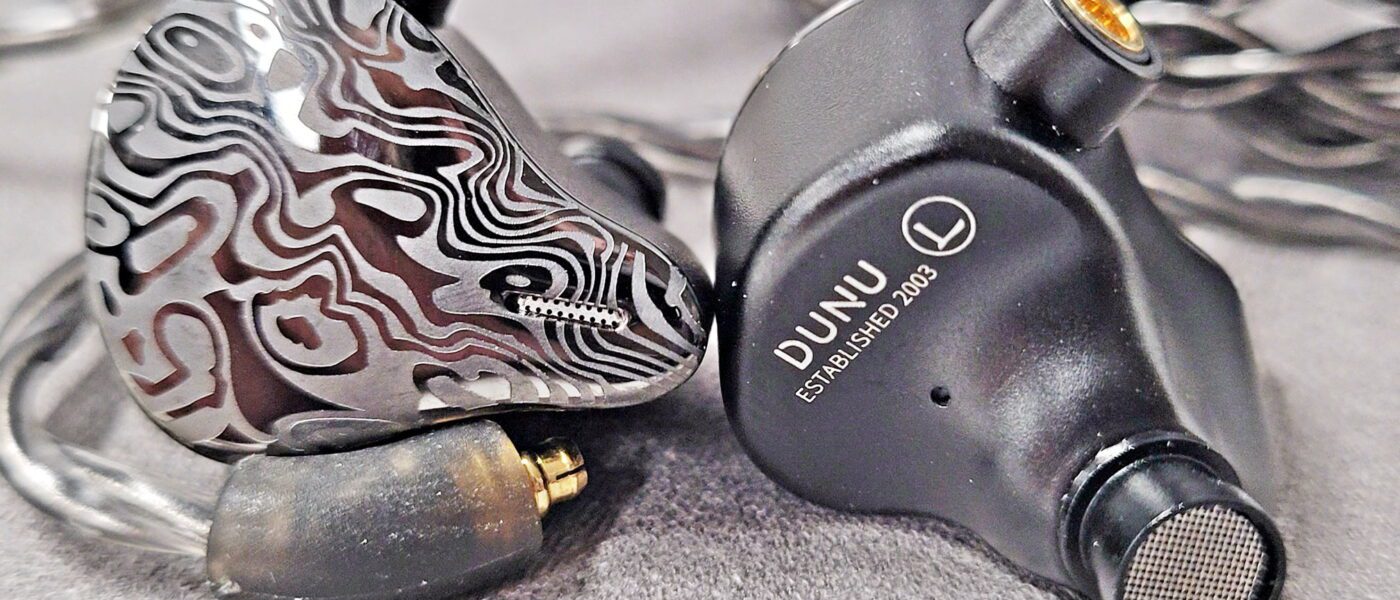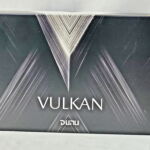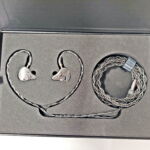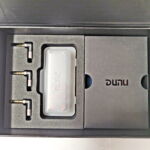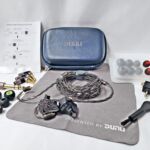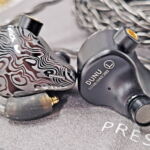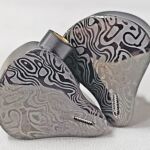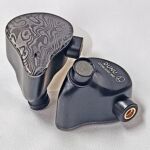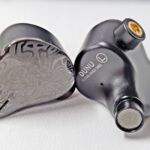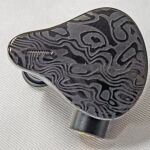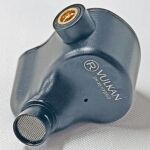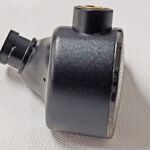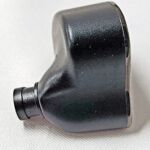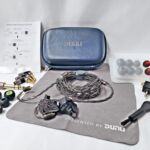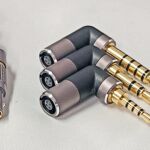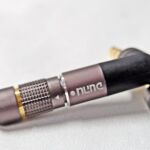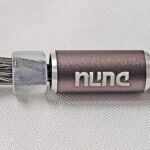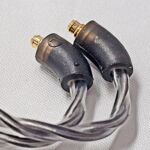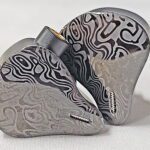Dunu Vulkan
disclaimer: I was sent the Vulkan by Dunu for review. I have no financial interest in Dunu or any of its distributors or partners. I am an admitted fan of the brand as I think they have created several of the best <$500 models available in the Studio Sa6 and Sa3 and the EST 112. It will be interesting to see where the new Vulkan fits in the line up and I’ll say now that my expectations are high so if the Vulkan falters I will be the first to say so.
If you have an interest in purchasing a Dunu Vulkan see Dunu’s website or Hifigo.
Unboxing / Packaging:
The Vulkan comes in book-fold style box with the earpieces and cable on the top level and the case and accessories hiding underneath. There is a soft case, cleaning cloth, 3 jacks, one 6.35mm adapter, 9 sets of tips, a cleaning tool, an airline adapter, the earpieces and cable. The kit is quite complete with the wide selection of tips and jacks with the only thing missing being a foam tip for better isolation.
Build/Fit:
The shell is mid to large size with a solid aluminum inner shell and a Mokume face plate. Mokume-gane is a Japanese technique similar to producing Damascus steel that uses different metals that are folded, compressed, and chiseled to expose different layers when the metal is flattened into a sheet. The process was originally used to make the decorative fittings on Samurai swords and has been used to make high end jewelry, watches, and fittings in more recent times. Tiffany & Co silversmiths are credited with introducing the technique to the west in the late 1800s and used Mokume in a number of designs through the early 1930s when the depression forced them to cut back. The Mokume process creates unique pieces so no two of the shells will look exactly alike but all have a two tone gloss and matte gray swirl pattern. I appreciate the subtlety in the design. There is a single vent in the face plate directly behind the nozzle and no venting on the underside. Nozzles are on a raised pedestal with a slight forward rake for fairly deep insertion. Connections are by MMCX with the body having a raised port on the leading side of the body. I found the Vulkan comfortable and with the tip-up wear style and ear-hooks the units stay put well during exercise.
Internals:
The Vulkan is a 6 driver per side hybrid with dual 8mm dynamic driver and four balanced armatures per side. Armatures are all made by Knowles with a pair labeled as mid-high drivers and the other pair listed as super tweeters. The dynamic drivers were sourced from Furukawa Electric and use a titanium coated diaphragm for added rigidity and reduced distortion and Dunu has designed the Air Control Impedance system to reinforce the dynamic drivers top end response without reducing the bass response in the process. Nominal impedance is 15Ω with a sensitivity of 109 dB/mW making the Vulkan extremely easy to drive and while balanced cables are provided some caution is advised when connecting the Vulkan to differential amplifiers as with its efficiency the usable volume range is often reduced to the lower 25% of the dial. On my Yulong Aurora, when using the 4.4mm port the volume is at normal listening level with the volume knob at the 8 o’clock position and ear-damaging loud by the time the dial reaches 11 o’clock. That same sensitivity makes the Vulkan a great pairing with dongles and lower powered sources as a potent amplifier simply is not needed.
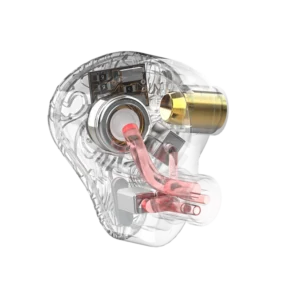
Cable:
The Dunu modular cable system is one of the best to date in my experience as it holds up well to frequent swaps, doesn’t place a lot of undue stress on the port with its 90• angled design, and the ease with which jacks can be interchanged. The one thing that still puzzles me is why do a 3.5 to 6.35mm adapter and not just create a modular 6.35mm jack for the cable itself? At any rate the cable used here comes with 3.5mm single-ended connector and adapter to 6.35mm as well as 2.5mm and 4.4mm connectors for balanced connections so the user has a wide variety of source options. The cable itself is silver plated 4-core OCC in a Litz braid with a 4 strand braid from the jack to the splitter and a loose two wire twist above it. There is a functional chin slider and a velcro cable tie. The case even has a side pocket for the spare jacks to keep the earpieces from getting scratched in transit. The cable is sold independently as the DUW-o2s and retails at $79.99. Additional USB type-C and lightning jacks are also available for the modular cable.
Sound:
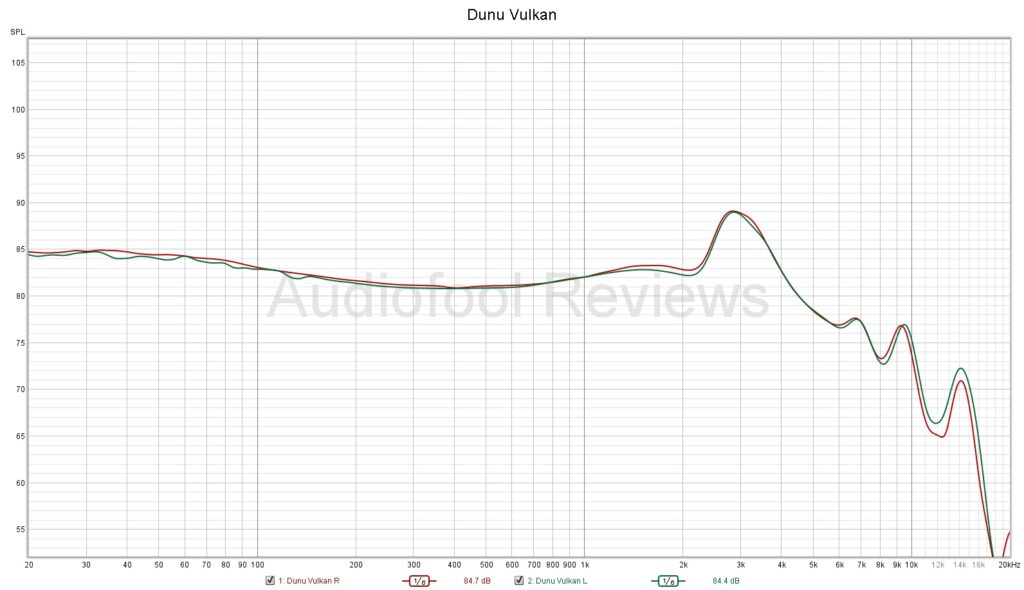
Bass:
This is normally the spot where I say the sub-bass is good but not enough to please the basshead community. Well the Vulkan should be enough to please most diehard bassheads. Sub-bass has good extension and enough rumble to make movie explosions and big timpani strikes a visceral experience. The mid-bass steps back just slightly but still has above average slam again making sure the rhythmic foundation is laid for bass heavy genres. Even with this potency, the bass remains well textured and clean though with no bleed and good texture and detail. This is not the in-ear for those looking for a neutral reference, but for those looking to rock out, its a super fun listen.
Mids:
Somewhat amazingly, the boosted bass does not bleed or obstruct the lower mids. I’m used to big bass meaning there is almost nothing left of the lower mids as a result, but the Vulkan has good quality lower mids in-spite of the big bass. Lower vocals stand in front of the instrumentation and depending on the recording can be a bit harsh sounding. Guitar has good rasp and growl as transients are clean and quick. Violins benefit from the pronounced lift in the upper-mids and lower-treble and have good tonality. Not every instrument benefits from the big lift though as piano can sound a bit tinny in its upper range. Upper vocals stand distinctly forward of the instrumentation and again can become harsh and even a touch sibilant if the track leans that way already.
Treble:
The elevation of the upper-mids carries through the lower-treble as well before dropping back to the same level of the mids at about the 4kHz mark. True treble stays fairly level until reaching the 8-9kHz range where there is a second smaller elevation that adds back some energy but can also make the Vulkan a bit fatiguing. Percussion has good snap with snares having crisp rattle. Cymbals can get splashy and a bit metallic at times due to that 2nd emphasized range. Above the later boost the signature drops off fairly quickly and top-end extension is average at best. There is a little BA timbre to the treble but not nearly as pronounced as is common.
Soundstage / Imaging:
I don’t expect much from in-ears where stage is concerned and the Vulkan is a fairly intimate listen as none of the dimensions are very large with a bit more width than depth and some height. Seating the orchestra is straight forward as instrument separation and layering are both very good so there are no overlaps or big gaps. Imaging is good with movements easily tracked and positioned fairly tightly defined in space. There is very little compression as tracks get busier and faster but it can be induced by EQing a bit more bass into the mix (not that it needs it).
Comparisons:
For comparison sake, I chose three in-ears at roughly the same price as the Vulkan, I chose a personal favorite the Oriolus Forsteni, a popular favorite the LZ A7, and a past favorite the Fearless S6Rui. I started to include the FLC 8N as well but the filters on the LZ A7 make it a difficult compare and I didn’t want to try and do another model with filters as that makes for a tough comparison.
The Oriolus Forsteni uses an acrylic shell with similar dimensions to the Vulkan if slightly thinner front to back. The Forsteni uses a single dynamic driver and dual balanced armatures per side and like the Vulkan uses a 3-way crossover so the two are similar despite the differing driver count. Both have a big bass emphasis but the Forsteni have a bit more recess in the lower mids while the Vulkan is a bit more linear. The Forsteni has a bit less upper-mid/lower-treble emphasis but still has a lift in the area and both roll-off at roughly the same point. To my ear the Vulkan is a bit more energetic and visceral while the Forsteni has a bit more detail and slightly better tonal accuracy in the upper-mids.
The LZ A7 is a popular favorite partially due to its base signature and partially due to the myriad tuning options that exist between the switch on the shell and the tuning filters. I did a rather thorough test and compare of all the filters sometime back and found the LZ A7 a top of the line performer. The shells on the A7 are metal as well and smaller than the Vulkan so those with smaller ears may find the A7 an easier fit. Looks wise the Vulkan kills the A7, but sound wise the A7 is a good bit more versatile with tuning filters, but even with the most bass heavy filter, it can’t touch the bottom end of the Vulkan. Those looking for a reference tuning will like the A7 while those looking for an engaging entertaining signature will gravitate to the Vulkan.
The Fearless S6Rui is a acyrlic shell by default but can be ordered as a full custom for an additional fee. Unlike the Vulkan, the S6Rui is an all balanced armature design utilizing 3 drivers per side. Drivers are a mix of Knowles and Sonion armatures with a 3-way crossover so again similar to the Vulkan in that respect. The S6Rui has a good bit less bass than the Vulkan as the balanced armature lacks the impact of the dynamics in the Vulkan. The upside for the S6Rui is it is more linear and a bit more detailed than the Vulkan. The Vulkan is a more enjoyable listen for pop, rock, and hip-hop as it has a bit more energy in all the right spots.
Thoughts / Conclusion:
With a retail of $380 USD the Vulkan is not an inexpensive in-ear, but with Dunu’s recent introductions of the EST112 and Sa6, they have proved they can compete with the best in the mid-fi space. The shells are gorgeous and near bulletproof so build-wise the Vulkan looks like it costs $400. The kit is very complete with everything one would hope for except foams which again helps reinforce the price. The modular cable system is one of the best on the market at any price and the cable alone accounts for almost $100 of the price. While the Sa6 was a reference tuning and the EST 112 was arguably all about treble details, the Vulkan takes a very different tact. Those looking for a reference tuning or an in-ear that mimics the Harman Target curve won’t find the Vulkan to their liking as it is far from it. The U shaped signature has big bass impacts and big lower-treble while still retaining solid mids in the process. Treble extension and detail are only average as is stage, but where the Vulkan really shines is in engagement. The Vulkan is just plain fun. If you need a guilty pleasure listen to your favorite hip-hop album or Primal Scream record, the Vulkan is a great option.
-
Bass - 8/108/10
-
Mids - 7/107/10
-
Treble - 6.5/106.5/10
-
Soundstage - 6.5/106.5/10
-
Imaging - 7/107/10
Summary
Pros: Gorgeous build, modular cable, visceral bass
Cons: big lower treble can be fatiguing, limited top end extension

